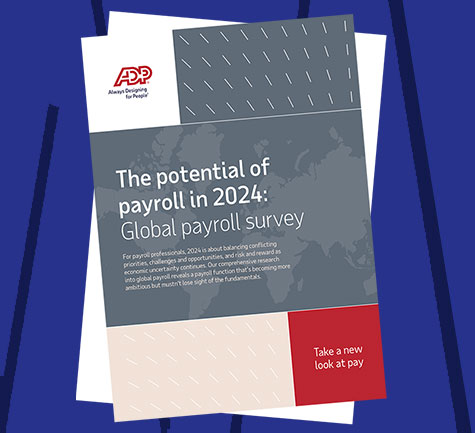In the complex world of business, employee remuneration is essential to get right – and easy to get wrong. A well-made payroll report makes everything simple, ensuring the workforce gets the clarity they deserve, and keeping you on the right side of labour laws and tax regulations. It also provides a vital financial snapshot, capturing essential details about wages, deductions, taxes and more.
Essentially, a payroll report is a document that employers use to verify their tax liabilities or cross-check financial data. It may include such information as pay rates, hours worked, overtime accrued, taxes withheld from wages, employer tax contributions, holiday balances and more.
It can help give a picture of where your business stands – and offer crucial information for future planning.
Table of Contents

Different types of payroll report
Payroll reports come in a variety of forms, each designed to fulfil specific purposes. Understanding the different types is crucial if you want to streamline your processes and maintain financial transparency.
- Payroll summary
What? – Summarises the total compensation paid to employees during a specific period.
Why? – Provides an overview of labour costs and aids in budgeting and financial planning. - Tax filings
What? – Contains information about taxes withheld from employees’ wages.
Why? – Ensures the business meets tax obligations and complies with regulations. - Year-to-Date Reports
What? – Displays cumulative payroll figures from the beginning of the fiscal year.
Why? – Offers insights into annual payroll trends and helps you make informed financial decisions. - Payroll Cost Analysis
What? – Breaks down payroll costs, including salaries, benefits, and taxes.
Why? – Facilitates cost control, budget adjustments and strategic decision-making.
How to use payroll reports to run your business
Payroll reports aren’t just about compliance. They can play a pivotal role in the management and growth of your business. When you understand the power of these reports, you can unleash their full potential.
- Make better decisions
Armed with valuable insights into workforce costs, you can make informed, data-driven decisions. - Make budgets and forecasts
By analysing payroll summaries and cost breakdowns, you can create accurate budgets and forecasts, which will promote financial stability. - Have happier people
When you communicate payroll information transparently to your workers, you foster trust and improve employee engagement. - Avoid risks
OK, we said it’s not just about compliance, but regularly reviewing tax filings helps you adhere to payroll tax regulations and reduce the risk of penalties or legal issues.
Simplify your report by using payroll software
The emergence of payroll software has been a game-changer. Now every business can achieve efficiency and accuracy in its financial processes. A notable player in this field is ADP, offering automatic reports that simplify the complexities of payroll management.
- Automatic reports
ADP’s payroll software streamlines the production of payroll reports, ensuring accuracy and saving you valuable time. - Customisation and flexibility
With ADP’s software you can customise reports so they meet your specific needs, and allow you to present data in a way that suits you. - Efficient compliance
The automated features built into ADP’s software help you stay compliant with ever-changing labour and tax regulations.
What payroll reports do employers need to file?
With Single Touch Payroll (STP), and now STP Phase 2, employers report employees' payroll information to the Australian Taxation Office each time they are paid, using STP-enabled softwareThe information required includes salaries and wages, pay as you go (PAYG) withholding and superannuation liability. It also includes paid leave, unused leave on termination, workers’ compensation and changes to employee details. These details include when an employee stops working for the business, including cessation date and reason code, when the status of employment changes – for example, from full time to casual – and when an employee’s income type changes – for example, from working holiday maker to salary and wages. Employers can also choose to report child support deductions and garnishee payments through STP.
For most employers, group certificate requirements are met by the STP procedures, but a payment summary is still required for any payments not reported in this way.
Additionally, employers must report their Super Guarantee contributions every quarter.
What payroll reports are due annually?
If a worker is a contractor, employers must withhold tax from payments if they don't quote their ABN to you, or if they have a voluntary agreement with you to withhold tax from their payments. In either case, the employer must advise the contractor of the amount withheld, and include the information in the annual report to ATO. There is a separate form for each action. Employers may also need to lodge a taxable payments annual report (TPAR) each year, detailing payments made to contractors.
At the end of each financial year, employers must lodge a PAYG withholding annual report for all payments not reported through STP. It must include all non STP-reported payments made to payees during the financial year and the amounts withheld from those payments.
An employer may need to lodge more than one annual report type. A separate form is required for payments and amounts withheld relating to:
- Wages, salaries and other work-related items
- Businesses that did not quote their ABN
- Interest, dividend and royalty payments to non-residents
- Payments to foreign residents
- An investment where a payee did not quote their TFN (or in some cases, their ABN)
- Super payments paid to a temporary resident who is permanently departing Australia
- Natural resource payments to foreign residents




